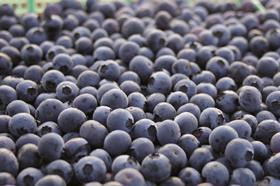
One would be hard-pushed to argue that the Chilean Blueberry Committee, created in 2009 with the aim of improving the country’s competitiveness and developing international markets, had not fulfilled its promise.
Prior to 2009, Chilean blueberries were principally sent to the US, according to executive director Andres Armstrong. “We realised we needed to find new markets as production was increasing,” he told Eurofruit. “We also understood that we needed to improve quality in order to guarantee repeat purchases.”
The European market for one has seen steady growth for Chilean blueberries. Meanwhile, the rise in demand from North America has been greater than growers’ ability to boost production.
Between 2009/10 and 2014/15, Europe saw growth of 23 per cent, North America a rise of 17 per cent and Asia an even more impressive increase of 39 per cent.
“Six seasons ago, we were very focused on North America,” said Armstrong. “Now it’s much more evenly spread.”
In Asia, Chile currently benefits from being the only country with direct access to the Chinese market. “China is trying to cut the grey channel, so this is good for the future,” said Armstrong. “It is also cheaper to go direct so we can sell at lower prices. But there is not much competition. The US is trying to enter the market, which would actually be good for the segment as a whole.”
According to Armstrong, China has grown by 46 per cent for Chilean blueberries over the past year. But it is not just China that exporters are excited about.
“South Korea has also grown fast, by around 45 per cent,” he said. “This market has risen from nothing just three seasons ago, so this is very promising. It will be a very important market in the future.”
Post-harvest technology is also improving each year, which is boosting the reputation of Chilean blueberries in distant markets.
“For Asia, all our blueberries go in plastic bags that prevent the fruit from losing water and firmness,” said Armstrong. “This was non-existent two years ago. It’s not like cherries - everyone knows the best packaging to maintain the shelf life of cherries. With blueberries, we are still experimenting.”



